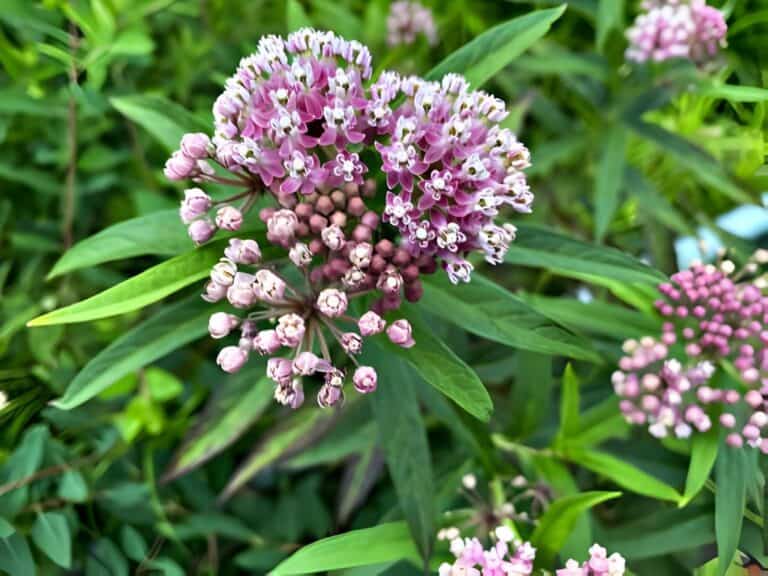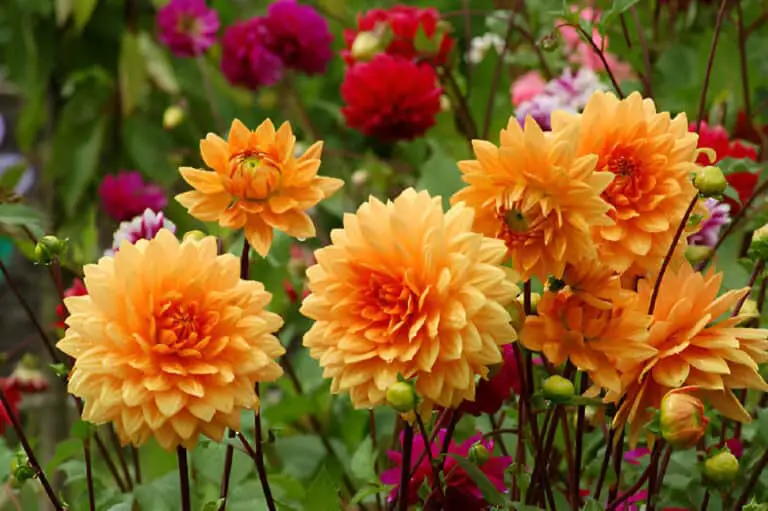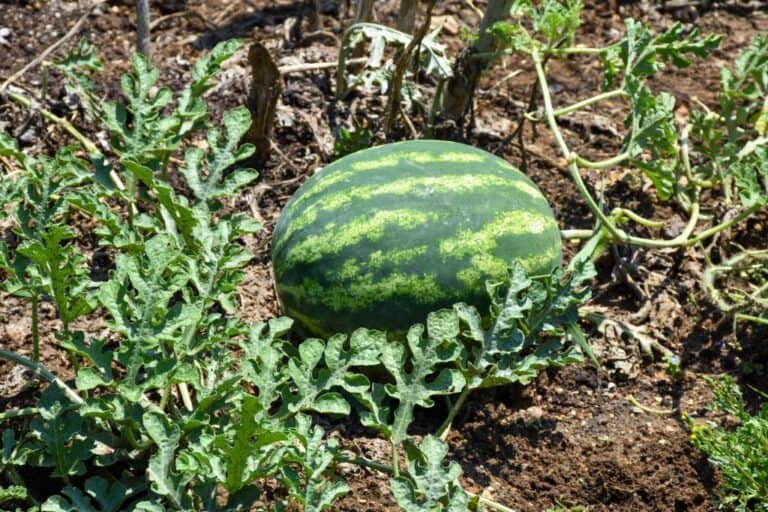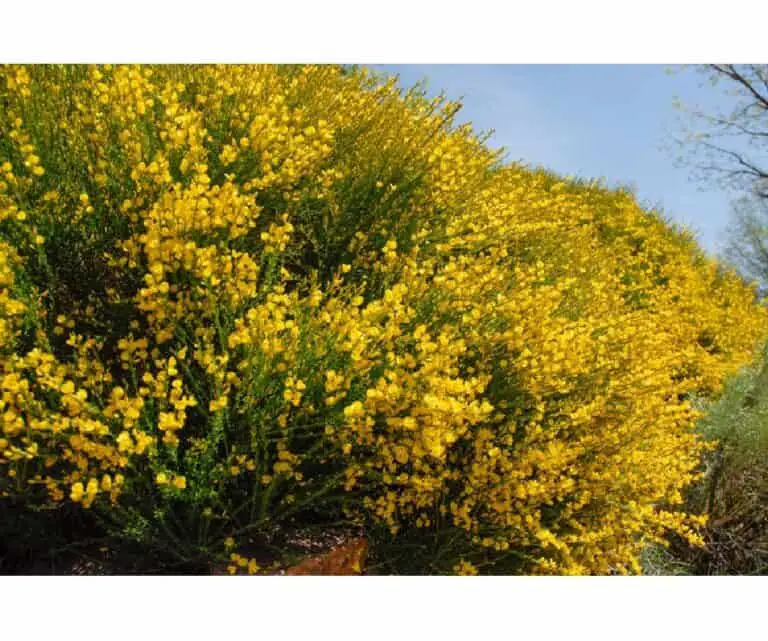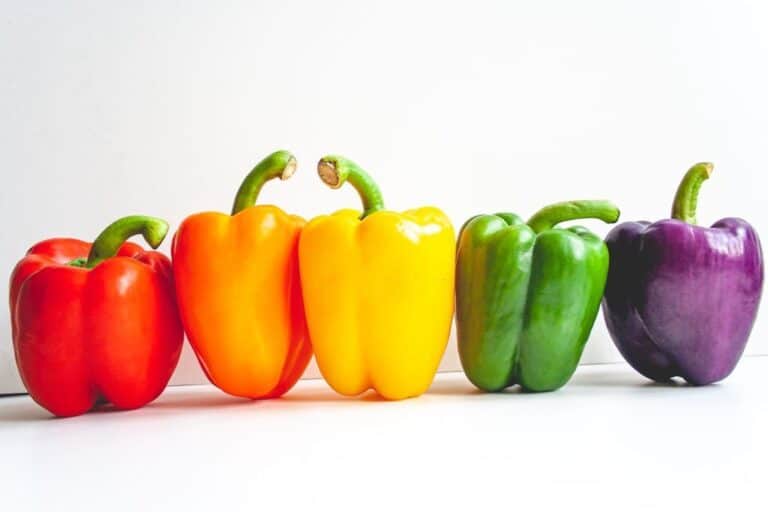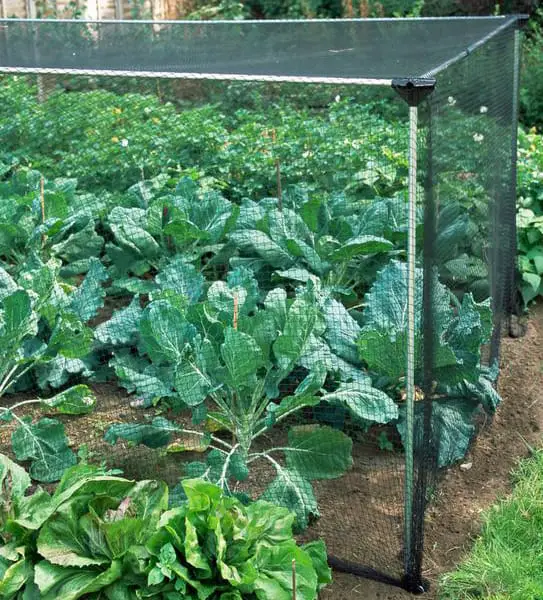Strawberry Growing Stages (with Pictures): Plant Life Cycle & Timeline

As a gardener, you may be wondering how fast strawberry plants grow. In this article, we will discuss the life cycle of a strawberry plant and how long & fast it grows. We will also analyze the different stages of strawberry growth and how fast they grow.
By understanding this information, you can better care for your plants and ensure successful strawberry cultivation! Knowing about the life cycle of strawberry plants can help you keep a healthy productive patch of delicious red strawberries year after year.
Strawberry Plants Life Cycle
The strawberry plant growth stage’s life cycle can be confusing for some. There are different things that happen at different times for the plant. Here is a look at the different growth stages of a strawberry plant:
Strawberry Seed Germination

The first stage of a strawberry plant is when it is in a seed germination form. The germination of a strawberry seed is an event that can be both exciting and frustrating. Exciting, because it is the beginning of a new life; frustrating because the process can be difficult to complete successfully.
Strawberry seed germination is trickier than most garden plants. Planting from bare-root strawberries, strawberry seedlings, or runners are other options to start strawberry plants.
Strawberry seeds need a dormant period before growing and require some light to germinate.
Strawberry seeds should be conditioned or stratified by being placed in temperatures between 10-30 degrees for 2-3 weeks. Normally this happens naturally outside. Depending on whom you buy the strawberry seeds from, they may already be conditioned.
If not, put the seeds in an airtight container and place them in the freezer for 2-3 weeks. Take them out of the freezer but leave them in the airtight container until they have warmed to room temperature, a day, or two. Now the strawberry seeds are ready to plant.
Remember that the seeds require some light to germinate. Place them on top of a potting mix and then push them down slightly with a pen or other tool to make sure they have good contact with the soil. Then lightly sprinkle more potting mix on top of the seeds. They don’t all need to be covered completely.
Runners develop late in the season after the berries have emerged. Between sprouts grown from seedlings and runners, the runners are heartier. They are larger and have a more fully formed support system, which provides the runner plants with more energy.
Strawberry Vegetative Growth
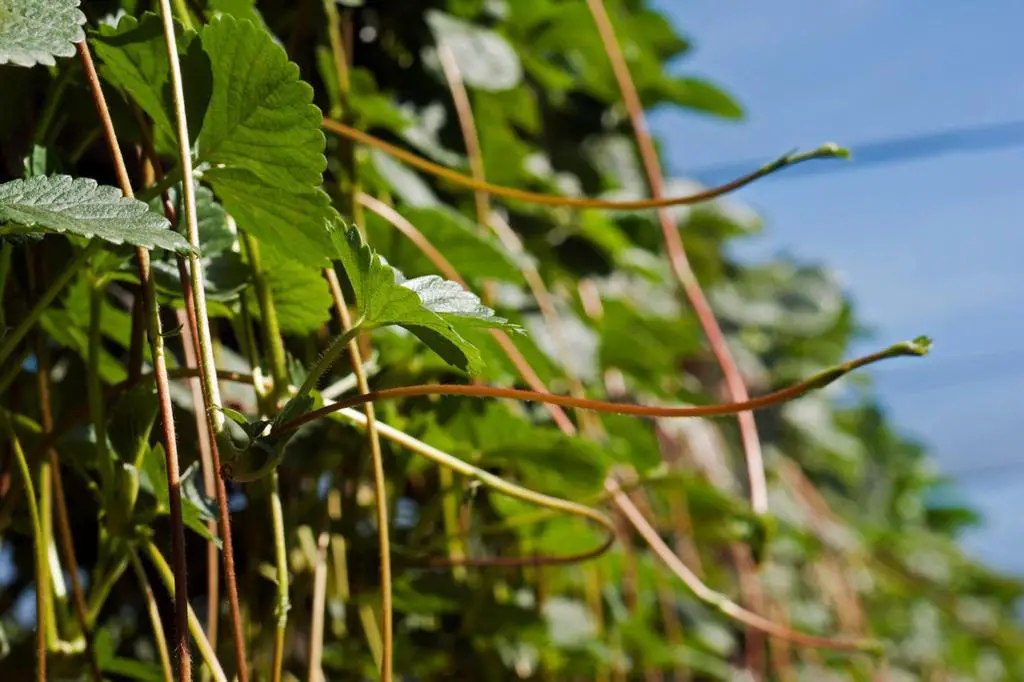
From seed, strawberries will take around 110 days from sprouting until they start to flower. For bare root strawberries, new leaves will start to develop 2-3 weeks after being planted, and the plant can begin flowering 3-4 weeks after that.
As part of their vegetative growth, strawberry plants produce daughter plants called runners (also called “stolons”). This is especially true for June-bearing strawberry types.
The plant will utilize its energy to produce fruit first, and later, make runners. The runners will extend before the weather becomes too cold, and the plant goes dormant for winter.
To establish a runner, position it where you would like a new plant to grow next year. Bury the end of the runner under the earth. The daughter plant will take root here.
If there is crowding in the existing vegetative growth, you may need to thin out the runners with gardening shears or scissors, so they do not overtake your garden. Plants should have about 6 – 8 inches of space between them. If there are older, woody stems among the vegetative growth, remove them and leave room for new plant growth.
The length of the vegetative stage varies depending on the type of strawberry plant and the climate. In general, the vegetative stage lasts for about six months. However, in warm climates, it can last for up to a year. In cold climates, the plant will go dormant during winter and start growing again in spring.
During the vegetative stage, you should water your plants regularly and fertilize them every few weeks. You should also keep them free of weeds and pests.
Strawberry Flowering & Pollination

After strawberry plants begin to flower, they will produce fruit in about 4 weeks.
Strawberries benefit from bees for pollination. The more pollination occurs, the healthier the fruit. If it is hot while plants are flowering and being pollinated, over 90 degrees, shade cloths and mulch on top of the soil can be used to keep plants cool. Otherwise, flowers or fruits can drop, or other problems with pollination can occur.
There are some varieties of strawberry plants used for edging, ground cover, and ornamental flowers. Some of these produce beautiful pink flowers for three seasons a year and offer attractive green and white leaves. They have little value for their fruit, which tends to be tasteless. These ornamentals can grow in light shade or full sun.
Strawberry Fruiting
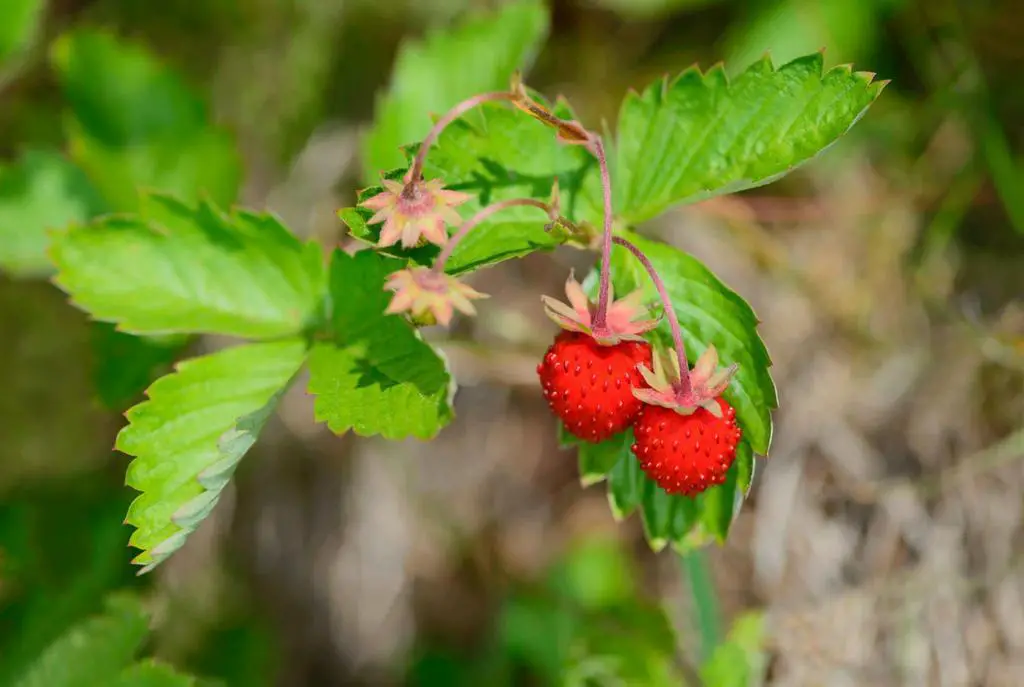
Strawberries are the first fruit to ripen in springtime. Depending on the type of strawberry plants you have in the garden, you’ll get fruit production at different times.
June-bearing strawberries produce large sweet strawberries for a period of around 3 weeks sometime around late May through June where I am.
Ever-bearing strawberries produce strawberries in 2-3 batches. Once in late spring and again in late summer/early fall. If the summer is mild and not too hot, they can produce a third batch in the middle of summer.
Day-neutral strawberry plants will produce fewer berries, but steadily from late spring to fall. If the summer is too hot, the plants will not do well in the heat. They will die back and pick up again in the late summer when temperatures cool.
Pick strawberries when they are fully ripe for the best flavor. If you have a busy few days ahead pick strawberries when they are 3/4 red so no fruit goes to waste.
Following Years of Growth
Strawberry plants are perennials that grow for many years. But the productivity of strawberry plants starts to dwindle after 2-3 years of production. Keep new plants growing to keep yields high. Consider moving strawberry beds entirely after 2-3 years.
Strawberry plants are forbs or herbs. The buds of strawberry plants are perennating, meaning they survive from one growing season until the next. Perennating buds is one characteristic of forbs. The perennating buds form in the plant crown. They develop before winter and die back during the cold, but help the plants survive the season and issue new flowers in spring.
Commercial farmers will sometimes handle strawberries as annual plants. It is possible to follow this pattern at home. The gardener plants strawberries in late summer. Any flowers or runners that start to develop are pruned and the following spring the gardener harvests berries and pulls up the plants. Then the process is repeated.
Can I Grow Just One Strawberry Plant?
Most varieties of strawberries grown today are monoecious, meaning a single flower has both male and female parts and is self-pollinating. So you can grow only one strawberry plant and get fruit; however, self-pollination rates are not high enough to depend on the plant pollinating by itself.
Insects, wind, and humans help with pollination. Insects – bees, flies, butterflies, and beetles – are the best pollinators. Draw these pollinators to your garden. The greater the variety of pollinators in your garden, the better.
If you live in an area without much insect activity, like an apartment balcony, you should hand pollinate the strawberry plant.
Use a small brush such as a cosmetic brush, paintbrush, cotton swab, electric toothbrush, or thing that resembles an electric toothbrush with bee wings attached to it. Collect pollen from several flowers and dab it onto the pistils of additional flowers. You can also use your fingers to delicately brush the outer edge of a flower and collect and move pollen.
Excellent pollination increases fruit size, berry color, and crop yield.
How Fast Do Strawberry Plants Grow?
When growing strawberries, you may be wondering how fast the plants grow. Strawberries typically take about 60 to 90 days to go from planting to harvest. The speed at which they grow can depend on a number of factors, such as the variety of strawberry plants, soil temperature, and sunlight exposure.
At its tallest point, a typical strawberry plant may reach a height of roughly 12 inches (it is, after all, a forb). It takes an established strawberry plant roughly 2 months to get there when the dormancy is broken. Depending on the climate, it might take up to 6 months for a fresh seedling to achieve that milestone following germination.
How Long Do Strawberry Plants Live?
Strawberry plants will return year after year for 5 or 6 years, but their berry harvest decreases after 2 or 3 years. Runner plants can develop from mother strawberry plants, and these are new plants that once established can be separated from the mother plants.
Strawberry plants can succumb to fungi. They can also fall prey to bacteria, mold, and viruses. These issues are more prevalent in high humidity climates.
The diseases that typically affect the plants due to fungi are leaf scorch, crown rot, root rot, leaf spot, verticillium wilt, and leaf blight. They can also fall prey to bacteria, mold, and viruses. Gray mold is particularly treacherous and can destroy an entire crop. It develops during rainy or cloudy periods.
Please comment below about the growth stages of strawberries or any related topic addressed above.
Final Thought
In conclusion, the strawberry plant goes through different growth stages during its life cycle. The strawberry plant life cycle is an amazing process to witness. Watching the plant grow from a small seed to a large, fruit-bearing plant is a rewarding experience.
The plant starts as seed germination and then grows into a vegetative growth sprout. Next, it goes into the flowering & pollination era, matures into an adult plant, and finally dies.
To ensure that your strawberry plants grow healthy and produce fruit, you must be aware of these growth stages and provide the right care for your plants during each stage.

